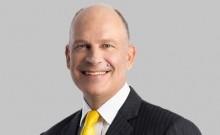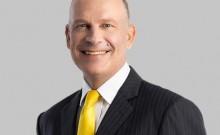
Today's economic landscape is defined by a palpable sense of volatility, as both global and Indian markets reel from a perfect storm of trade shocks, policy ambiguity, and shifting investor sentiment. The Sensex closed with a loss of 176 points while the Nifty slipped beneath the psychologically significant 25,500 mark. Sectoral heavyweights, particularly in IT and metals, bore the brunt of the downturn, with HCL Tech and Hindalco each registering a 2 percent decline. This reversal follows a fleeting rally in the previous session, which had been buoyed by optimism for a potential trade breakthrough and anticipation of robust corporate earnings. Yet, that optimism has evaporated with remarkable speed.
The Copper Tariff Shock: Global Reverberations
At the heart of today's market anxiety lies U.S. President Donald Trump's abrupt announcement of a 50 percent import tariff on copper. This seismic policy move sent shockwaves through commodity markets, causing copper prices to tumble on both the London Metal Exchange and the Shanghai Futures Exchange. The implications are profound, given copper's status as "Dr. Copper," the metal that diagnoses the health of the global economy. Its ubiquity in electronics, construction, and renewable energy makes it a lynchpin of industrial growth.
A tariff of this magnitude is virtually unprecedented in recent memory and raises the specter of retaliatory measures from major copper exporters such as Chile and Peru. Dr. Alicia García Herrero, Chief Economist for Asia Pacific at Natixis, warns, "This move could trigger a domino effect across global supply chains, driving up costs and stoking inflationary pressures at a time when the world can least afford it."
Currency Moves and Central Bank Prudence
The fallout from the copper tariff extended swiftly into currency markets. The U.S. dollar strengthened for the third consecutive day as investors, unnerved by escalating trade tensions, sought the perceived safety of the greenback. This surge exerted downward pressure on emerging market currencies, with the Indian rupee falling to a two-month low.
Central bankers responded with a posture of studied caution. At the European Central Bank's annual forum in Sintra, Federal Reserve Chair Jerome Powell articulated a prudent "wait and see" approach, remarking, "We're taking time, for as long as the U.S. economy is solid, the prudent thing is to wait." ECB President Christine Lagarde echoed this sentiment, underscoring the need to carefully assess the second-round effects of new tariffs on both inflation and growth. The message from the world's monetary stewards is clear: policy will remain data-dependent, with no rush to adjust rates despite signs of softening inflation in several advanced economies.
India's Investment Landscape: Seeking Safety Amidst Storms
The turbulence is not confined to equities or commodities. In India, investors are recalibrating portfolios in response to declining interest rates and global uncertainty. Money market funds have seen an infusion of nearly ₹43,000 crore in April and May 2025 alone, as savers seek refuge in safety and liquidity. This pronounced "flight to quality" reflects a broader risk-averse mood, with investors wary of equity volatility and macroeconomic headwinds.
Meanwhile, the insurance sector has reported muted growth in the first quarter of FY26, hampered by regulatory bottlenecks and tepid consumer demand. Ritesh Kumar, CEO of a leading private insurer, observes, "The sector is in a holding pattern. Until there is greater clarity on interest rates and regulatory reforms, growth will remain subdued."
Trade Tensions: The Broader Economic Fallout
The imposition of steep U.S. tariffs on copper is emblematic of a broader global drift toward protectionism. The World Trade Organization projects global trade growth at a mere 1.7 percent for 2025, significantly below the decade's average. The International Monetary Fund cautions that further fragmentation of global supply chains and escalating trade barriers could shave up to 0.8 percentage points off global GDP growth this year.
India, as both a major importer and exporter of metals and electronics, stands particularly exposed to these crosscurrents. The Confederation of Indian Industry has called for urgent diplomatic engagement to avert a "cascade of retaliatory measures" that could imperil jobs and economic momentum.
The Road Ahead: Navigating Uncertainty with Foresight
In this climate of heightened vulnerability, the consensus among economists and market strategists is unmistakably cautious. Dr. Soumya Kanti Ghosh, Group Chief Economic Adviser at SBI, notes, "We are in a period where policy missteps or further escalation in trade tensions could tip the balance from volatility to crisis."
For investors, businesses, and policymakers, the imperative is to remain agile, diversify risk, and prepare for further shocks as the global economic landscape continues to shift. The coming weeks, marked by a confluence of corporate earnings, central bank meetings, and potential trade negotiations, will be pivotal in determining whether today's turbulence is a passing squall or the harbinger of a more protracted storm.
The world's economic compass is spinning, and only those with vision, adaptability, and resolve will chart a course through these uncertain waters.
[Major General Dr Dilawar Singh, a Ph.D. with multiple postgraduate degrees, is a seasoned expert with over four decades of experience in military policy formulation and counter-terrorism. He has been the National Director General in the Government of India. With extensive multinational exposure at the policy level, he is the Senior Vice President of the Global Economist Forum, AO, ECOSOC, United Nations. He is serving on numerous corporate boards. He has been regularly contributing deep insights into geostrategy, global economics, military affairs, sports, emerging technologies, and corporate governance.]








![Sky is the limit: IndiGo is now tenth largest airline by capacity globally; growth indisputable [details]](https://data1.ibtimes.co.in/en/full/767454/sky-limit-indigo-now-tenth-largest-airline-by-capacity-globally-growth-indisputable-details.jpg?w=220&h=135)